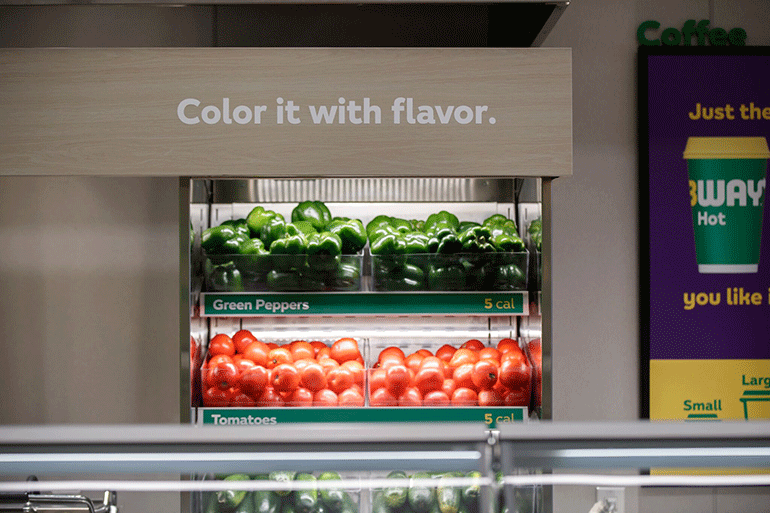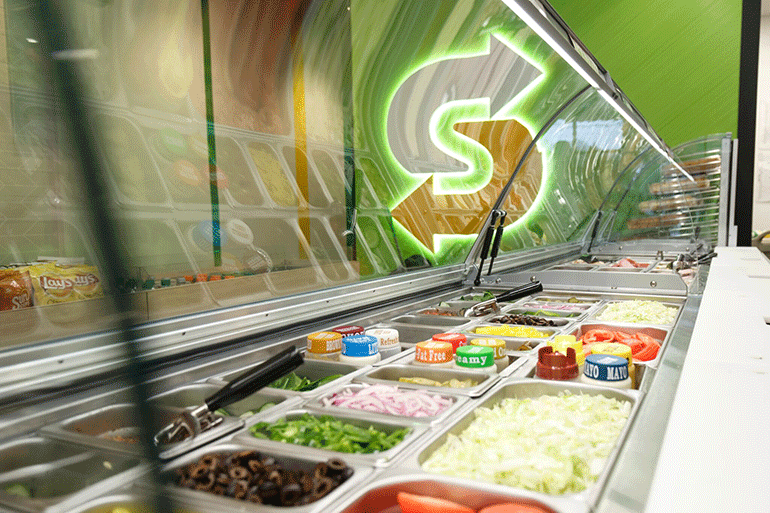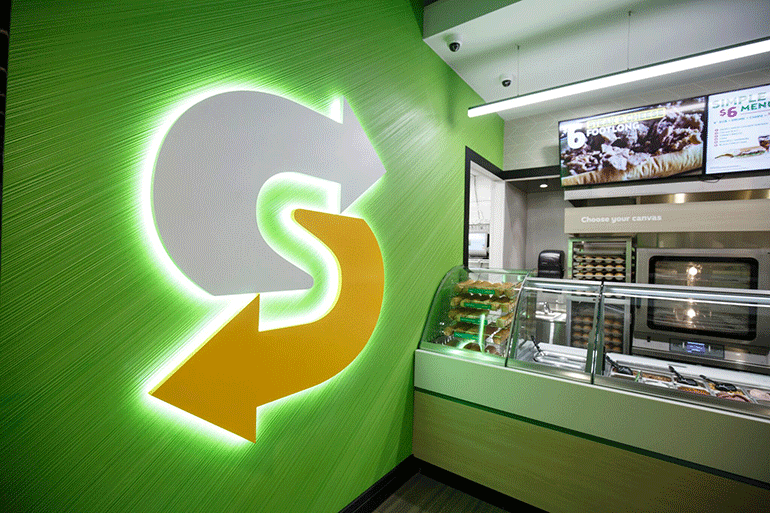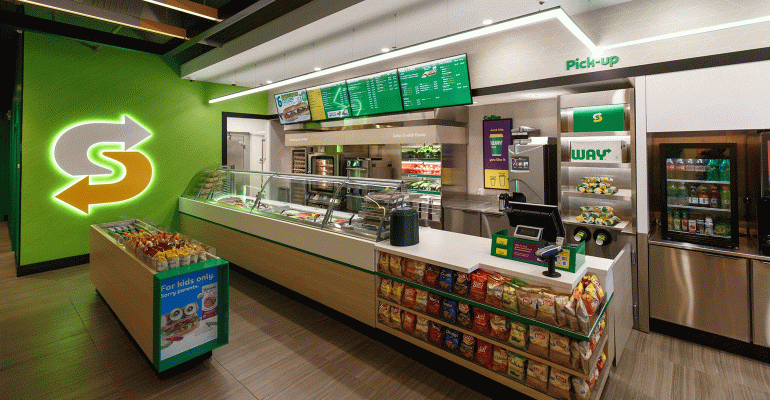Subway wants to remind consumers that it pioneered the assembly-line restaurant model — and also give them a place to charge their phones.
The Milford, Conn.-based sandwich giant is revealing its “Fresh Forward” redesign that it hopes to bring to its 44,000 global locations over the next few years, in what promises to be a massive overhaul of the world’s largest restaurant chain by unit count.
The company expects 3,000 to 5,000 new and remodeled locations in the new design to open by the end of next year, about 85 percent of them in North America.
The remodel combines new décor with updated technology — including self-ordering kiosks at some locations, as well as charging ports — and a more revealing look at ingredients.

“It’s more than a remodel,” said Don Fertman, chief development officer at Subway. “It’s a total refresh: The décor package, the overall improvement of the entire dining experience. We’re incorporating our digital footprint, changing how we present our vegetables and our breads, and how we present the entire experience to Subway customers.”
Subway worked with the design firm FRCH Design Worldwide and spent the past couple of years working with franchisees, vendors and suppliers to determine its design.
The company released designs for all new locations in the U.S. and Canada beginning in the first quarter of 2018, but some operators in certain markets have already built units with the new design.
Subway also wants operators to remodel their locations under the new design. That’s no small task: The chain has 30,000 locations in the U.S. and another 15,000 units in other markets around the globe, and wants all of them to be refreshed.
“It won’t happen overnight,” Fertman said. “It will take a few years. It’s a pretty big project.”

Another challenge is that many of Subway’s franchisees operate just a couple of locations. That could make it difficult for many of them to be able to pay for a remodel. Subway’s estimated sales per unit are $420,800, according to NRN Top 100 data.
The cost of a new location under the remodel is similar to what it has been, $200,000 to $300,000.
“This is competitive with that,” Fertman said.
Subway didn’t provide remodel costs, but Fertman said, “As we work through this, we’re getting more competitive on the number.”
To encourage operators to remodel locations, Subway plans to provide incentives and help with financing. The company is also offering operators different tiers, based on the location. How much a franchisee would have to remodel would depend on the performance of the location, where the unit is located and its lease.
“We’ve been strategically doing remodels in the U.S. and Canada, so we’re able to help franchisees from the perspective of what type of remodel they should do,” said Trevor Haynes, Subway’s vice president of operations. “We have particular tiers to make sure the remodel type suits the location. The remodel has to work from an economic point of view.”

Still, some franchisees are concerned about the cost of the remodel compared with how much a typical Subway generates in profits. “How can a franchsiee pay for a $100,000 remodel when they make $30,000 in EBITDA?” said Keith Miller, a Subway franchisee in California and chairman of the Coalition of Franchisee Associations. He referred to earnings before interest, taxes, depreciation and amortization.
Subway hopes that a remodel could provide the system with a shot in the arm, similar to what remodeling projects have done at other chains like McDonald’s, Burger King, Wendy’s and Popeyes. All three have used remodeling programs to generate sales growth.
Unit volumes at Subway have fallen by nearly 11 percent since 2013, according to NRN data. The chain’s domestic system sales have dropped, too, from $11.9 billion in 2014 to $11.3 billion last year. The company’s domestic unit count, which was once growing at an unstoppable rate, has fallen over that time, by 359 locations, to 26,744 units at the end of last year.
Remodeling projects can invigorate a chain because customers like fresher designs, which can also introduce new features.
But John Gordon, a San Diego-based restaurant consultant, said Subway’s primary issue is its food, especially compared with other sandwich competitors like Jimmy John’s and Firehouse Subs.
“You have some pretty grody Subways out there,” Gordon said. “But they’re not awful. I think it’s far more important what the food is and what potential new service platforms there are.”

The new design is big on service platforms, especially on the technology side. The design will feature digital menu boards, Wi-Fi, USB charging ports, and Apple and Samsung Pay.
It will also include kiosks in some locations, a growing feature in more quick-service and fast-casual restaurants. Panera Bread, McDonald’s and Wendy’s are all planning to add kiosks to their restaurants, or have already done so.
To help with those orders, as well as orders from the app, Subway will have a pre-order pickup area. And some locations could have a second make line to handle the influx of orders.
But for all of the technology, Subway still wants to maintain the experience that lets customers choose the toppings they put on their sandwiches.
“Subway guests enjoy the experience of going down the line, saying, ‘I want this; I don’t want that; I want this,’” Haynes said.
The chain is enhancing that in the remodel, with more modern food displays for bread, cookies and vegetables, which are cut in-house and include cucumbers, green peppers and tomatoes.
“The first restaurant we opened with this look, customers walked in and said, ‘Is this the first Subway restaurant to slice vegetables?’” Haynes said. “No, we’ve been doing this for 50 years. It’s just the simple things you can do.”
Contact Jonathan Maze at [email protected]
Follow him on Twitter: @jonathanmaze





